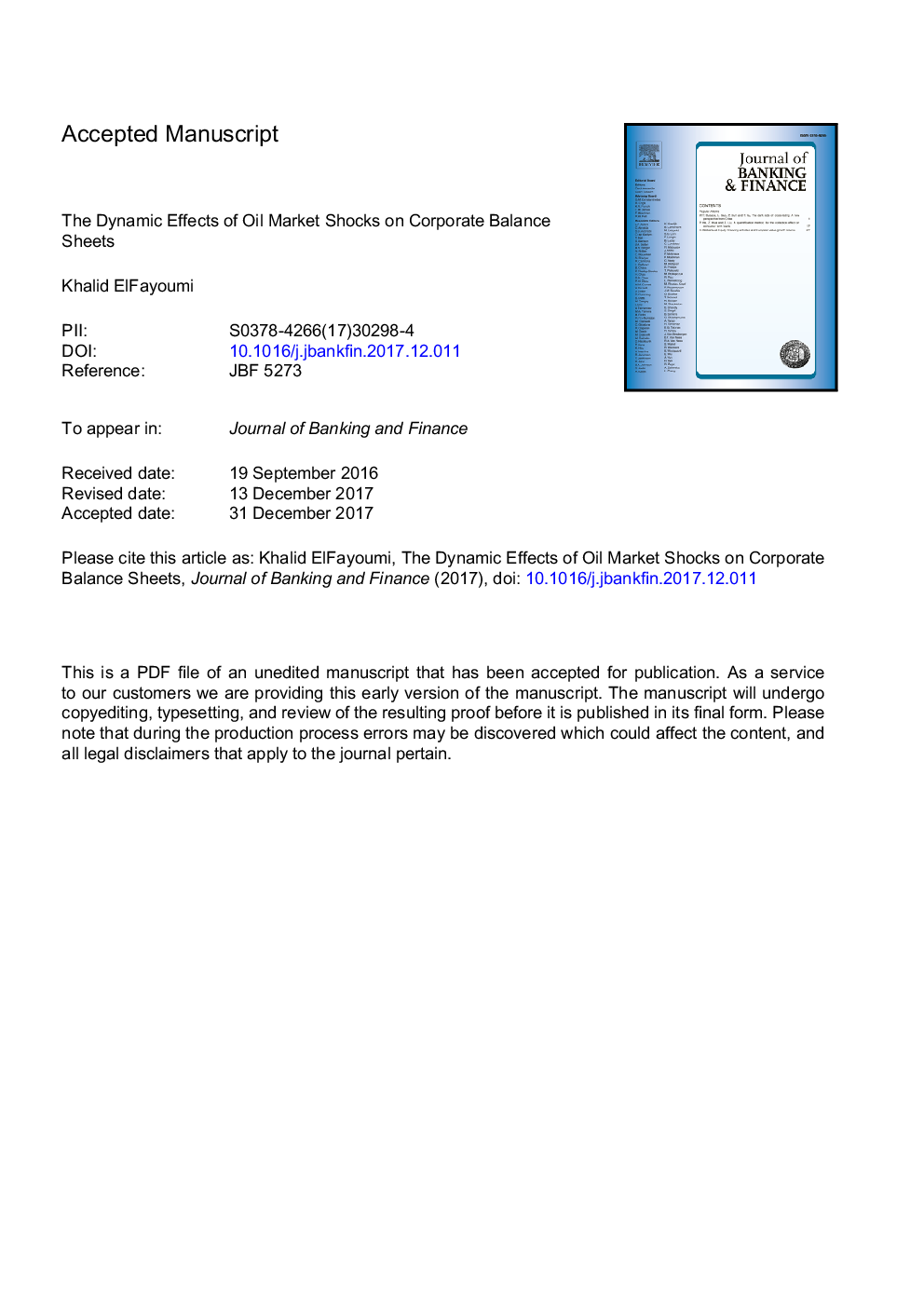| کد مقاله | کد نشریه | سال انتشار | مقاله انگلیسی | نسخه تمام متن |
|---|---|---|---|---|
| 11020512 | 1716299 | 2018 | 53 صفحه PDF | دانلود رایگان |
عنوان انگلیسی مقاله ISI
The balance sheet effects of oil market shocks: An industry level analysis
ترجمه فارسی عنوان
اثرات ترازنامه شوک های بازار نفت: تجزیه و تحلیل سطح صنعت
دانلود مقاله + سفارش ترجمه
دانلود مقاله ISI انگلیسی
رایگان برای ایرانیان
کلمات کلیدی
ترجمه چکیده
این مقاله تاثیرات پویایی شوک های بازار ساختاری نفت را بر روی ترازنامه های شرکت های آمریکایی، با استفاده از داده های سطح صنعت در زمینه تولید، تجارت و معدن، تخمین می زند. برای شرکت های تولیدی، یافته های نشان می دهد که اختلال غیرمنتظره در عرضه نفت که قیمت نفت را 1٪ افزایش می دهد، سود 1.3٪ کاهش یافته است. از سوی دیگر، در مقایسه با افزایش قیمت نفت، هنگامی که از طریق حرکت مثبت در تقاضای جهانی نفت، و پس از یک افزایش غیرمنتظره تقاضای نفتی نظیر نفت، 0.79 درصد افزایش مییابد، سود به میزان 0.39 درصد افزایش مییابد. اثر مثبت ترازنامه مثبت شوک نفتی پیش بینی شده در بخش تولیدی، منجر به تأثیر منفی آن بر فعالیت اقتصادی جهانی می شود. یک توضیح از تجزیه و تحلیل سطح صنعت به دست می آید که نشان می دهد که گمانه زنی در بازار نفت موجب تأثیر موجب در صنایع پایین دست و افزایش تقاضای موجودی برای محصولات نفتی و شیمیایی می شود. بر خلاف نقش ثانویه آن در توضیح تغییرات تاریخی در قیمت نفت و سود در بخش تجارت و معدن، شوک های عرضه نفت، نوآوری های بازار نفت غالب در نوسانات در تولید سود شرکت های تولیدی بوده است. تجزیه و تحلیل همچنین پاسخ محدودی از هزینه های تولید را به تغییرات خارجی در قیمت نفت نشان می دهد، با این تفاسیر مفهوم کلاسیک که سهم هزینه نفت در صنعت تعیین کننده میزان قرار گرفتن در معرض شوک بازار نفت است.
موضوعات مرتبط
علوم انسانی و اجتماعی
اقتصاد، اقتصادسنجی و امور مالی
اقتصاد و اقتصادسنجی
چکیده انگلیسی
The paper estimates the dynamic impact of structural oil market shocks on the balance sheet of US firms, using industry level data covering manufacturing, trade and mining sectors. For manufacturing firms, findings indicate that an unexpected disruption in oil supply that raises oil prices by 1% lowers firm profits by 1.3% on impact. On the other hand, profits rise by 0.39% in response to the same increase in the price of oil, when it is driven by a positive movement in the global demand for oil, and by 0.79% after an unexpected surge in speculative oil demand. The positive balance sheet effect of speculative oil shocks on the manufacturing sector contrasts their negative effect on global economic activity. An explanation follows from the industry level analysis, which suggests that speculation in the oil market creates a ripple effect in downstream industries and raises inventory demand for petroleum and chemical products. In contrast to its secondary role in explaining historical variations in the price of oil and profits in trade and mining sectors, oil supply shocks are found to have been the dominant oil market innovations in driving fluctuations in manufacturing firms' profits. The analysis also finds a limited response of production costs to exogenous changes in the oil price, disputing the classic notion that the cost share of oil in an industry determines its level of exposure to oil market shocks.
ناشر
Database: Elsevier - ScienceDirect (ساینس دایرکت)
Journal: Journal of Banking & Finance - Volume 95, October 2018, Pages 112-127
Journal: Journal of Banking & Finance - Volume 95, October 2018, Pages 112-127
نویسندگان
Khalid ElFayoumi,
